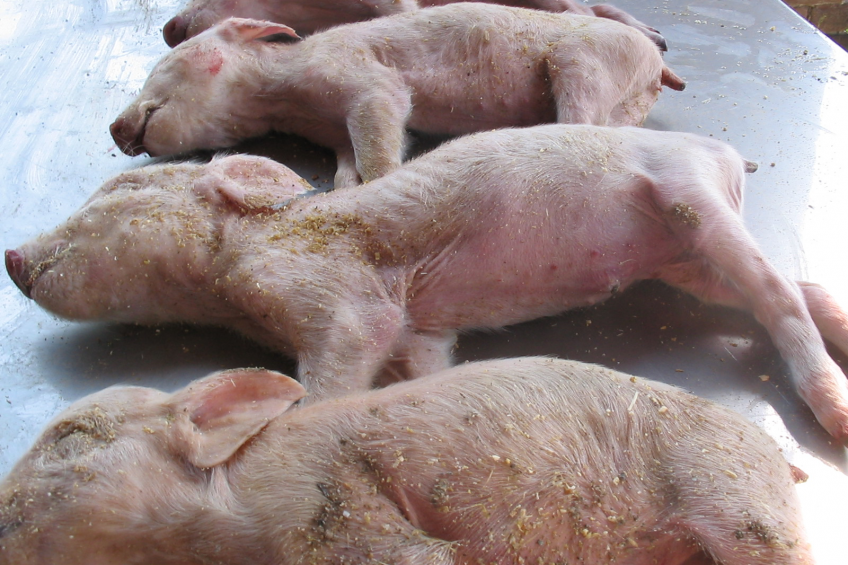PED virus might be transmitted through air

Airborne transmission should be considered as a potential route for Porcine Epidemic Diarrhoea virus (PEDv) dissemination.
Researchers of the University of Minnesota, USA, write in the scientific journal Veterinary Research that they have demonstrated that PEDv can become airborne, remain infectious while suspended in the air, and that PEDv genetic material can be transported long distances following natural infections.
The research focused on the question whether PEDv could become airborne and if so, whether the virus was infectious. For this purpose, air samples were collected both from a room containing experimentally infected pigs and at various distances from the outside of swine farms experiencing acute PEDv outbreaks. Results indicated presence of infectious PEDv in the air from experimentally infected pigs and genetic material of PEDv was detected up to ten miles downwind from naturally infected farms.
Research setup
To evaluate whether PEDv could become airborne and remain infectious in air samples, the researchers performed an experimental challenge study. Briefly, twelve seven to eight week-old PEDv-naïve pigs were housed in a 35 m3 BSL-2 animal isolation unit at the University of Minnesota.
On day 0 of the study, each pig was intragastrically inoculated with 20 ml of PEDv inoculum calculated from preliminary pilot studies as an adequate volume to properly deliver the samples without over-filling the stomach.
After inoculation, clinical signs of PEDv infection including body temperature, diarrhoea, vomiting and lethargy were recorded for three days at each sampling event from 24 hour post-challenge. Air samples were also collected in the centre of the isolation room 1.2 m above the floor.
To determine whether PEDv could become airborne under field conditions, eight swine herds located in Oklahoma (US) and belonging to one production company were identified.
Finishing and breeding herds that were experiencing acute PEDv outbreaks during each day of air collection throughout the study were purposively selected. Air collection was conveniently performed at different locations downwind, ranging from 9.6 m to 24.14 km (0.006 to 15 miles) from each of the farms starting from the furthest distances each day. A total of 62 samples were collected for testing.
Discussion
The researchers write that pigs inoculated with diluted air samples indeed did develop PED clinical signs and lesions and PEDv was detected in faeces and tissues indicating that air samples contained infectious PEDv.
The research showed that PEDv genetic material could be detected up to 16 km (10 miles) although infectivity could not be shown. The authors write that to their knowledge, this is the first report to establish that PEDv can be found in the air, that suspended airborne particles can be infectious, and that PEDv genetic material can be transported over long distances.
Since the virus spread rapidly after being diagnosed in the USA in April 2013, many scientists have been focusing on how the virus is spreading. Only two weeks ago, another study zoomed in on the presence of the virus in feed.
This research to airborne transmission was conducted by Carmen Alonso, Dane P. Goede, Robert B. Morrison, Peter R. Davies, Albert Rovira, Douglas G. Marthaler and Montserrat Torremorell. Read the full research here.











